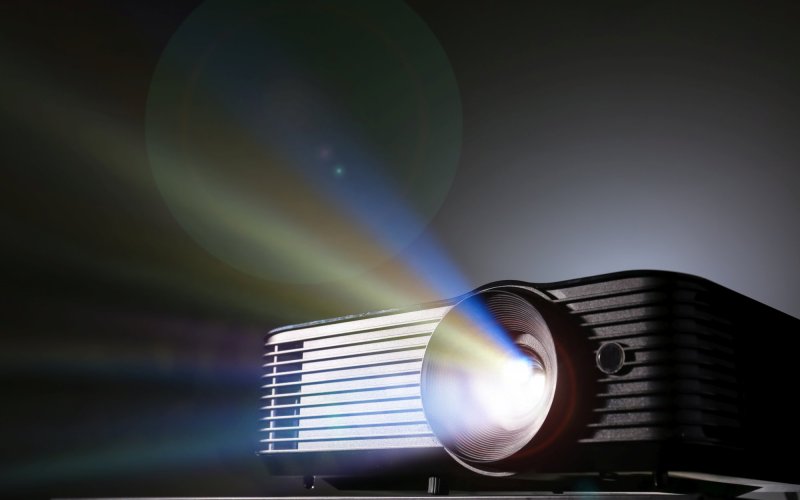If I project a film on the wall, how do the parts of the image that are black actually come into existence? Does the projector emit black light?
To watch a movie, whether it’s projected on a wall at home or on a big screen at the cinema, you need a movie projector that will project beams with information about the image. It will direct red beams to where the red is supposed to be and green beams to where the green is supposed to be. If the image is to be white, the projector will direct all the colours it has at its disposal. Putting all the colours together is what produces white.
The film projector uses three colours of light — blue, green and red. By mixing them, all other colours are created.
Most projectors have blue, red and green, and by adding them together, all the colours we see in the film are created. For example, combining red and green light produces yellow, and illuminating one point with blue and green at the same time produces turquoise. All three colours together then create white. But where is the black hidden? The projector has no black lamp and does not generate black rays. No black light exists. So how come we see the black parts of the film as black?
The answer lies not in the projector, but in how our brains perceive the world around us. The projector tricks it into believing it sees black when it is looking at white because the black on the projector display is a very faint white.
If you don’t believe it, let the projector project a completely black image on the wall in a darkened room, and then go explore the boundaries of the image. You will find that the “completely black” is actually a dimly lit white wall.
The human brain cannot perceive colours absolutely. It would be extremely impractical because things around us would constantly change colour as the lighting changes. Our red shirt would be a different colour in the morning, a different colour at noon, a different colour on a clear day, and a different colour when it gets cloudy, changing colour depending on what light bulb we observe it under. But we still perceive the shirt as the same and unchanging.
However, if we were to take a picture of it under different lighting conditions and compare these photos, we would have to admit that the shirt changes colours. The fact that we perceive the colour of a t-shirt as unchanging is due to the fact that our brain is constantly matching it to its surroundings, such as the skin and hair shade of the wearer. Because of this, it doesn't even occur to us to think that someone has changed clothes just because the sun has hidden behind the clouds.
Field A and field B each appear to be a completely different colour, but in fact they are the same shade of grey. Our brain has been fooled by the surroundings of the fields, which tell us that field A is “black”, so it must be significantly darker than field B, which is “white”.
It’s exactly the same with the projector. If we project a shot of a chessboard, and the white squares are brightly lit, our brain will assume that the much less lit squares are black. For one thing, it’s used to the chessboard being black and white, and for another, it’s judging the difference in contrasts. Based on experience, we can conclude that only a black-white difference can represent such a large contrast difference. So we will perceive the areas that are dimly illuminated by the projector as black, even though they are not black at all.
The need to judge colour by context and not absolutely is evolutionary. Even our monkey ancestors needed to know whether a banana was ripe or unripe. In any lighting. Otherwise, they might have gotten the impression that an unripe banana was ripe just because the sun had just peeked out of the clouds. We have learned to recognize this property of the human brain and then use it to trick us. But only by making the projector convince you that white is actually black can you watch a movie.
Want to ask something?
Send us an e-mail with the subject “Physics mysteries” to the address:
We can't wait to tackle your interesting questions!






